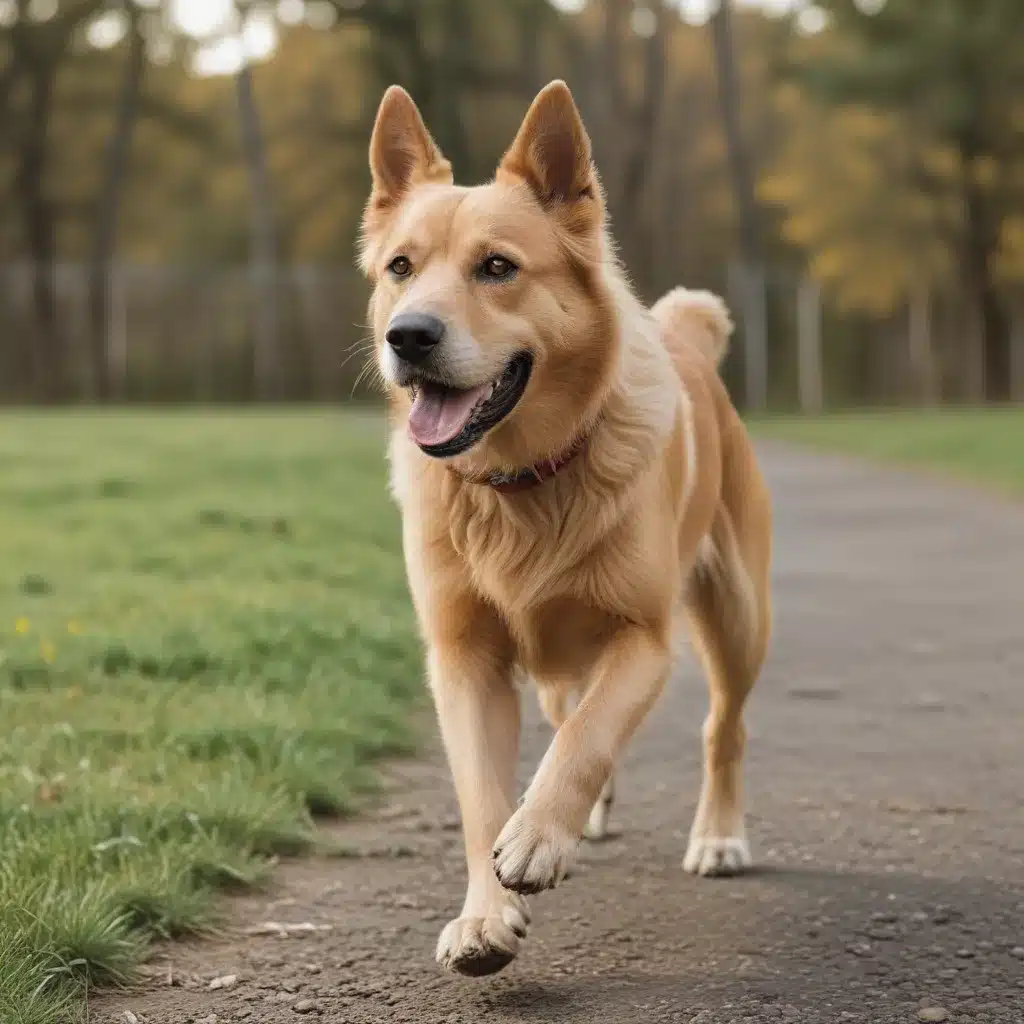
As our canine companions age, it can be tempting to let them slow down and take it easy. After all, they’ve certainly earned the right to a little more napping and a little less romping, haven’t they? Well, my fellow dog lovers, I’m here to tell you that keeping your senior pup active is crucial for their health and wellbeing. In fact, maintaining a regular exercise routine is one of the best things you can do to support your older dog’s quality of life.
The Importance of Exercise for Senior Dogs
I know what you’re thinking – “But my dog is getting up there in years! Isn’t it time to let them relax and take it easy?” Not so fast! As PDSA explains, dogs of all ages need daily activity to stay happy and healthy. In fact, exercise is especially important for our senior canine friends.
You see, as dogs age, they can develop a variety of health issues that may impact their mobility and energy levels. Things like arthritis, muscle loss, and even cognitive decline can make it tough for them to stay active. But you know what they say – “use it or lose it!” Regular, low-impact exercise can actually help prevent or manage many of these age-related problems.
Finding the Right Fitness Routine for Your Senior Dog
Okay, so we know exercise is crucial, but what does that actually look like for an older pup? Well, according to the American Kennel Club, the key is to focus on moderate, low-impact activities. Gone are the days of chasing tennis balls and going on long, high-intensity hikes.
Instead, think gentle walks, swimming, and even some light strength training and stretching. The goal is to keep your senior dog moving without pushing them too hard. As The Farmer’s Dog advises, aim for at least 30-60 minutes of exercise per day, broken up into shorter sessions if needed.
And don’t forget to tailor your activities to your individual pup’s abilities and limitations. Some seniors may do better with water-based exercise to take pressure off their joints, while others may thrive on a daily neighborhood stroll. The most important thing is to listen to your dog and adjust as needed.
Easy At-Home Exercises for Senior Dogs
If getting out and about is a challenge, don’t worry – there are plenty of simple, low-impact exercises you can do right at home. The American Kennel Club recommends a few favorites:
Obedience Moves on Varied Surfaces
Start with your dog on a non-slip surface and guide them through basic obedience commands like sit, down, and stand. As they get stronger, progress to more challenging surfaces like yoga mats or foam dog beds. This engages their core and stabilizer muscles for better balance and mobility.
Front Paw Platform
Lure your pup to stand with their front paws on a low platform, like a textbook or step stool. As they hold this position, feed them treats to encourage them to shift their weight back onto their hind legs. This strengthens those all-important rear leg muscles.
Lateral Walking
In this fun exercise, you’ll guide your dog to step side-to-side, engaging the muscles that support their hips and shoulders. Use a nubby surface or yoga mats to give them something to focus on as they dance across the room.
Remember, always check with your vet before starting any new exercise routine, and be sure to start slow and gradually increase the intensity and duration. Your senior pup will thank you for keeping them fit and active!
Keeping Your Senior Pup’s Mind Engaged
Of course, physical exercise is only half the battle when it comes to supporting your older dog’s wellbeing. Mental stimulation is just as important, especially as they start to experience cognitive decline.
That’s why I love the idea of incorporating brain-boosting activities into your senior dog’s routine. Things like food puzzles, scent work, and even simple trick training can go a long way in keeping their mind sharp. Plus, they’re a great way to bond with your pup and keep them engaged and interested.
So, while you’re ensuring your older dog gets their daily dose of low-impact physical activity, don’t forget to mix in some mentally enriching games and challenges too. Your senior pup will feel happier, healthier, and more fulfilled as a result.
Closing Thoughts
At the end of the day, our senior dog companions deserve the very best. And that means doing everything we can to support their health, happiness, and quality of life. By incorporating regular, appropriate exercise into their routine, we can help them thrive in their golden years.
So, if you’ve got an older pup at home, I encourage you to get creative with low-impact activities and mental stimulation. Trust me, your furry friend will thank you for it – and you just might find that you both get a little spring back in your step too. After all, healthy dogs make the best companions!

